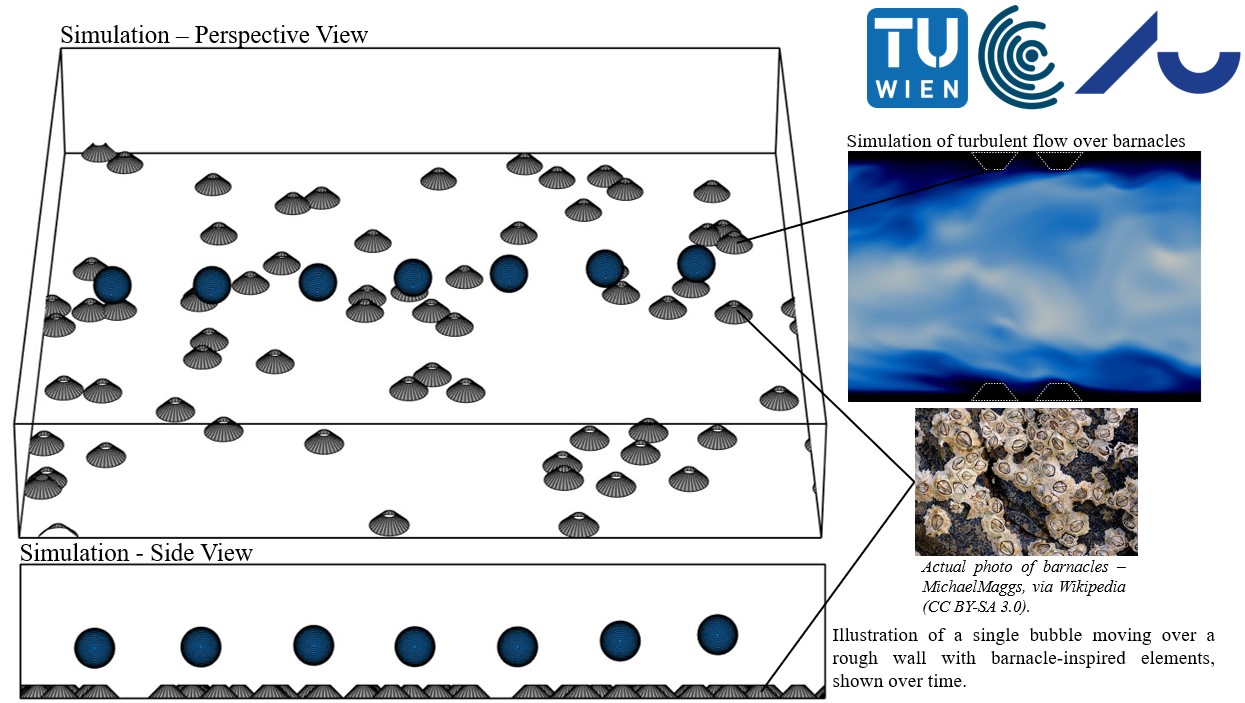Use-case: High-fidelity simulations of bubble dynamics for maritime drag reduction

Unlike what the name, GenomeDK, might suggest, we have users from a wide range of fields, including those that are not related to genomes!
We are therefore very happy to present this slightly unusual use-case from Sina Nozarian, a PhD student at the Department of Mechanical & Production Engineering, Faculty of Technical Sciences (Tech) at Aarhus University.
Sina is supervised by associate professors Pourya Forooghi and Mahdi Abkar, and is currently on a research mobility stay at TU Wien (in Vienna), collaborating with Professor Alfredo Soldati specifically on the topic presented here.
With this, we give the word to Sina:
In the world of maritime transport, skin friction drag is a massive deal—it can account for up to 60% of a ship’s energy consumption. And over time, as ship hulls get rougher, drag gets worse. Even small imperfections can lead to big performance penalties. One promising solution? Air lubrication—injecting bubbles along the hull to reduce drag. It sounds simple, but the physics behind it is anything but, especially when rough surfaces enter the equation.
Reducing drag means reducing fuel consumption—and in a global industry that still heavily relies on fossil fuels, even small improvements can lead to significant environmental gains. As such, this research plays a small but meaningful role in supporting the green transition, both in Denmark and worldwide.
Our research digs into exactly that in an academic setup. We use high-fidelity simulations—Direct Numerical Simulations with adaptive mesh refinement—to explore how bubbles behave near both smooth and rough walls. We’re particularly interested in understanding the complex dynamics of bubble–turbulence interactions and their interplay with realistic surface topologies. It’s a deep dive (pun intended) into the messy, fascinating behavior of turbulent bubbly flows, with the goal of helping engineers make these systems work better in the real world, where surfaces are never perfectly smooth.
However, these kinds of simulations don’t come cheap—resolving fine-scale turbulent structures and bubble dynamics at high fidelity requires substantial computational power and memory. That’s where GenomeDK came in.
The cluster has been a valuable part of our workflow. The ability to run large-scale simulations gave us the computational muscle we needed. It offered not just power, but flexibility: minimal wait times, generous memory, and no harsh runtime caps. And the support team? Super responsive and helpful. For research like ours, which pushes the limits in terms of resources and complexity, GenomeDK has been an ideal partner.
We gratefully acknowledge the Danish Independent Research Fund (DFF), for funding the project.
Thank you to Sina for contributing this use-case! If you’d like to contribute your own use-case, please do not hesitate to get in touch.